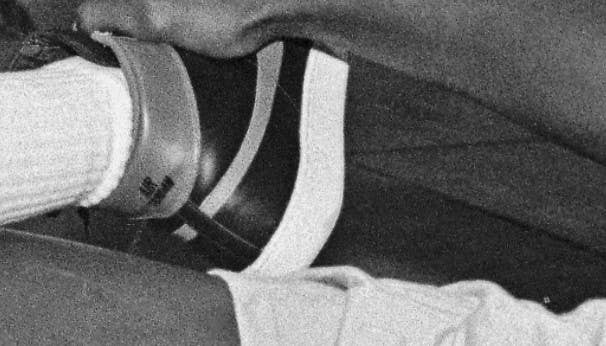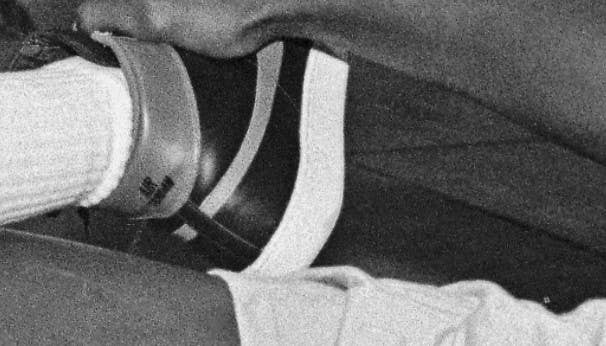
"When I saw the pictures, my mouth was open. My jaw was on the floor," says Guinness World Record-holding sneaker collector Jordan Geller.
"It could be worth a million, honestly," says Leon Benrimon, who deals in vintage sneakers at sports memorabilia mega-firm Heritage Auctions. He puts a conservative estimate of the pair's worth at $500,000 minimum.
The subject of their superlative reactions is a black and red pair of the mythological Nike Air Ship that veteran sports agent Aaron Goodwin posted on Twitter this week. It was a revelation amid the hype of ESPN's The Last Dance documentary about Michael Jordan, a rare stone around the man that hadn't been unturned. The sneaker is steeped in history and hasn't really been seen since Jordan wore it back in 1984, in his nascent Nike days. For shoe nerds and Jordan enthusiasts, it is a holy grail. For people who trade in sneaker memorabilia, it could be the most valuable pair on Earth.
Since it’s another #TheLastDance Sunday, I had to bring out the top kicks in my collection. True grails! One of the first two pairs of @Jumpman23 sneakers @Nike gave MJ in 1984. The real “Banned” Air Jordans (AKA the Air Ship). And no, I didn’t buy these! - AG pic.twitter.com/H97kAYuSCp
Jordan wore black and red sneakers leading up to his rookie year in the 1984-85 NBA season. The league complained about them and wrote a letter to Nike saying the shoes were prohibited. The brand seized on the marketing opportunity, releasing an ad about the Air Jordans being banned from the NBA. This story of the "Banned" Air Jordans held for decades as an important piece of Nike lore, but it wasn't totally accurate. Sneaker sleuths like Marvin Barias debunked the notion that the first Air Jordan was the offending shoe, discovering that it was instead a black and red pair of the Air Ship, a model that Nike didn't retro until 2020. That black and red pair Jordan wore, which had personalized "Air Jordan" writing on the heel, was all but lost to history until Goodwin's tweet.
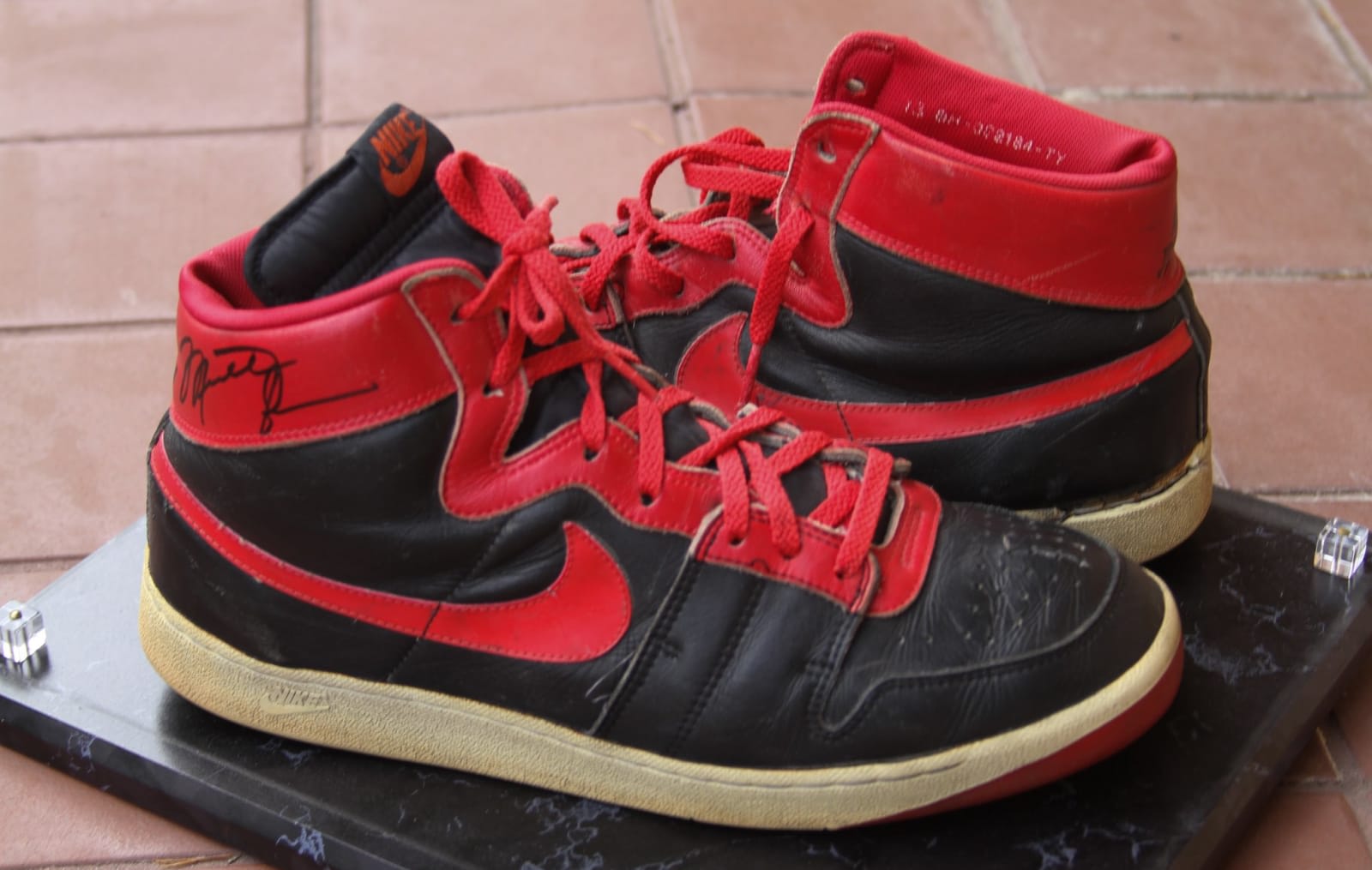
"Truly, what baffles me about all of this is that the guy who owns them hasn't said anything," Geller says.
Where they have been all these years and how they came into his possession is still a mystery. When reached for comment, the agent didn't have anything to add; it appears he isn't yet ready to tell the story of the shoes. His tweet does offer some detail, though. In it, Goodwin calls the Air Ship one of the first two pairs of Jordan shoes Nike gave to the young Chicago Bull in 1984. He says he did not buy the pair, which has what looks like a contemporary Jordan autograph. Goodwin has been in the sneaker endorsement game for decades, negotiating lucrative deals like LeBron James' first with Nike, so it's not hard to imagine his deep connections in the sports world steering such a prized shoe into his possession.
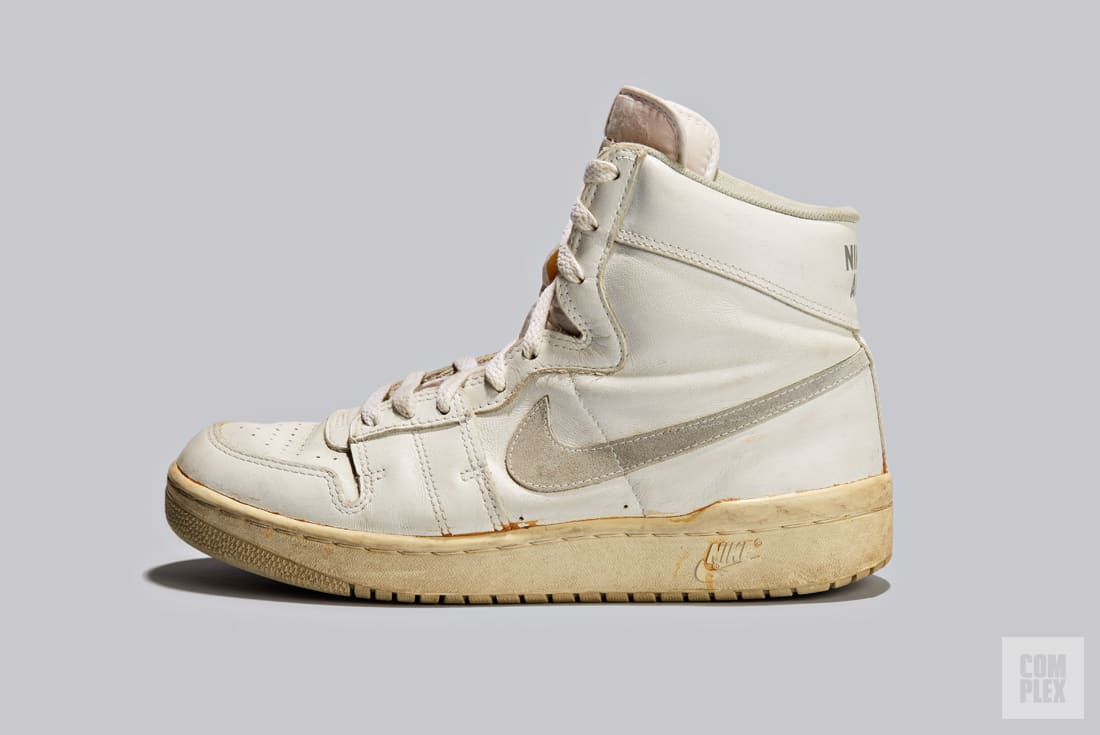
Where do the sneakers go from here? Again, Goodwin hasn't given any indication they're going anywhere, but were they to hit the auction block, they could make history. The current world record for the most expensive sneaker belongs to the 1972 Nike Waffle Racing Flat "Moon Shoe," which sold for $437,500 in 2019 via a Sotheby's auction, arranged by high-end resell shop Stadium Goods. (In 2017, a pair of the Converse Jordan wore in the 1984 Olympics sold for $190,000.) Ben Jacobs, the brand director at Stadium Goods, who arranged the Sotheby's sale, thinks the black and red Air Ship would fetch more than the vintage Nike running shoe because of the Jordan connection.
"You could start there and easily see bidding for this reaching into seven figures," Jacobs says.
Heritage Auctions' Benrimon, who regularly deals in vintage, game-worn sneakers that sell for $30,000 to 50,000, agrees that tie to Jordan renders the shoe more valuable than the aforementioned Moon Shoes. That early Nike design is maybe more important to the sportswear industry, but does not inspire the same level of zeal as Jordan. One of these pairs is about sneaker culture, the other about pop culture.
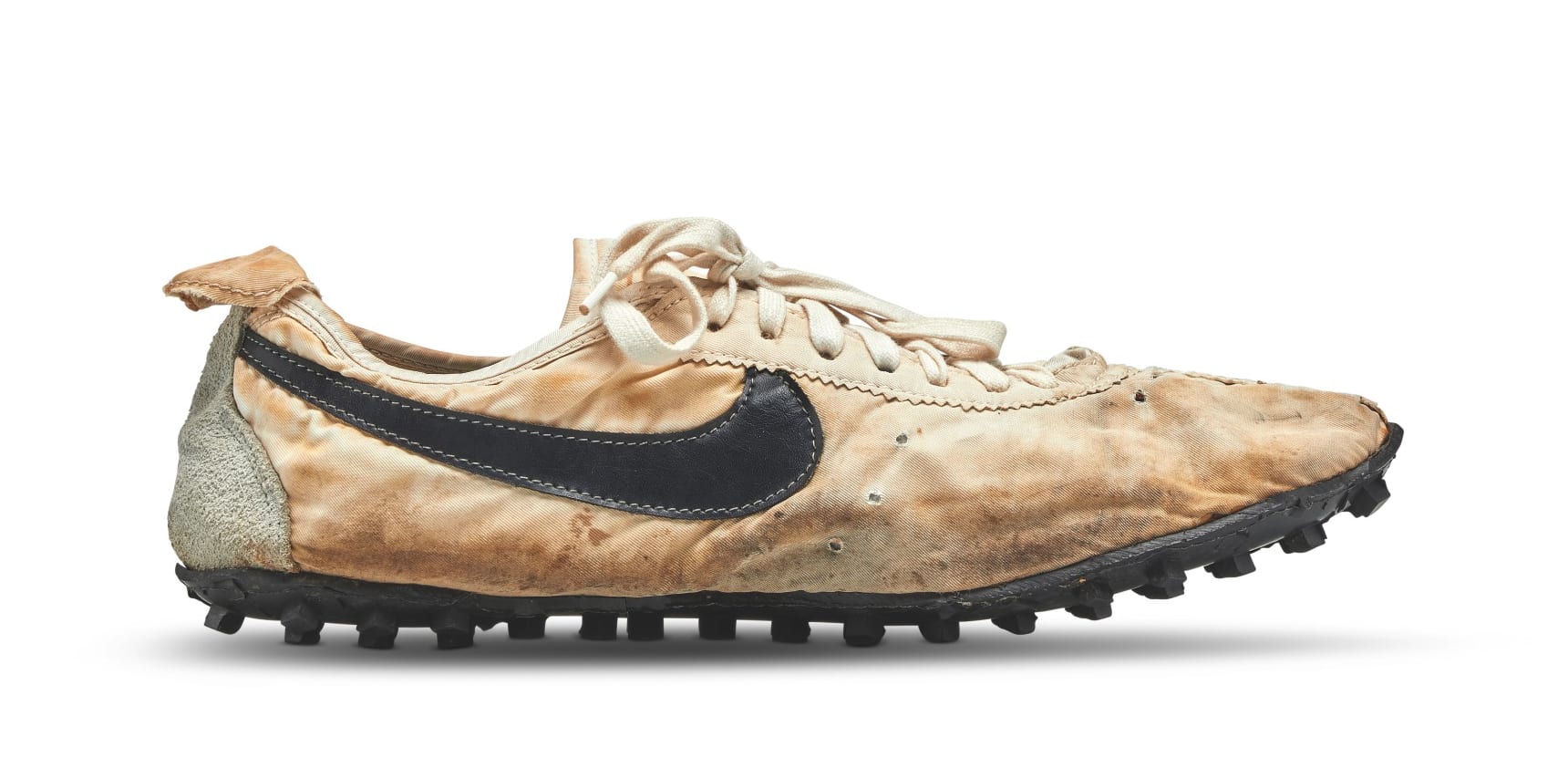
Geller, the collector who owned the Moon Shoes before the Sotheby's sale, agrees. He points out that a white and red pair of Air Ships worn by Jordan sold for $71,000 in 2015, but that player-exclusive version lacked the "Air Jordan" text that Goodwin's has on the heel. It also wasn't dressed in the black and red scheme that's so important to Jordan history.
That history shouldn't be downplayed, and a shoe this significant ultimately can't be reduced to a theoretical price. While it's not a proper Air Jordan, it is a generally unsung Nike model that helped the greatest basketball player of all time write his legend.
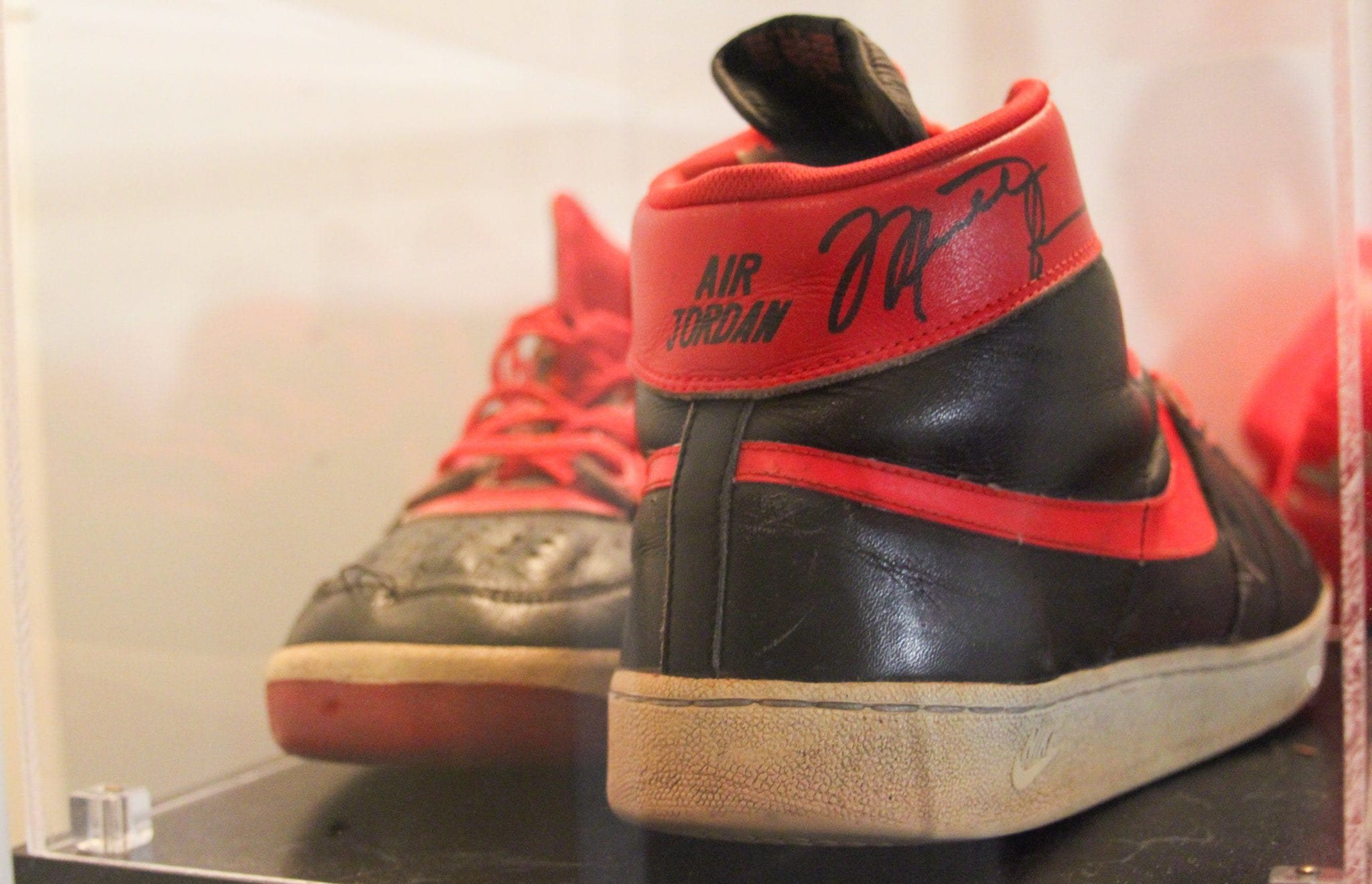
"Institutions would be interested in acquiring this Air Ship," Geller speculates, saying that the shoe would be at home in the Smithsonian or with the James R. Jordan Foundation, named for Jordan's late father.
Until such a transfer happens, Goodwin is the gatekeeper. If this Air Jordan artifact did end up on the open market, if it is in fact the exact pair he wore that got him in trouble with the NBA, what kind of astronomical price would be attached?
"The sky's the limit," says Jacobs.

